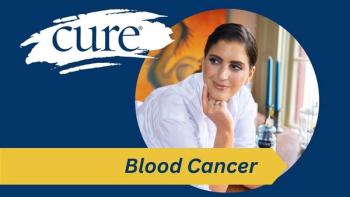
Just the Facts
Better treatment options have put chronic lymphocytic leukemia in the spotlight in recent years. But just what is CLL?
CHRONIC LYMPHOCYTIC LEUKEMIA (CLL), the most common leukemia in adults, has been the focus of headlines over the past few years because of enormous progress in its treatment.
In 2015, the American Society of Clinical Oncology recognized these developments as Cancer Advance of the Year. Two immunotherapies and two targeted drugs had been approved, giving patients with CLL treatments that were more effective — and produced fewer side effects — than older therapies.
Those improvements introduced meaningful options for older patients who could not have withstood the harsher regimens of the past. They also made it more possible to treat CLL long term as a chronic condition rather than an emergent disease.
But what exactly is CLL? What are the warning signs, and who should be on the lookout for them?
WHAT IS CLL?
CLL originates in the bone marrow, where cells form blood. The B lymphocytes, a type of white blood cell, are unable to fully mature into healthy cells that effectively fight infection. These leukemia cells may look somewhat normal under a microscope, but they reproduce too rapidly, survive longer than normal cells and crowd out healthy white blood cells. Eventually, the cancerous cells spill into the bloodstream, though it may be years before symptoms arise.
Each year, about 21,000 people are diagnosed with CLL, and about 4,500 people die from it. The average risk of developing CLL is about 1 in 175.
Scientists are not certain what causes the disease but have identified some risk factors. People over 50 have a higher likelihood of developing CLL, as do those who’ve had significant exposure to Agent Orange or other pesti- cides. People with a family history of the disease among first-degree relatives are also at higher risk, as are men in general and people of either gender in North America and Europe compared with those in Asia.
However, because most cases are sporadic, or random, without any clear risk factors — and most patients receive diagnoses of early- to intermediate-stage CLL and can be treated with a watch-and-wait strategy — screening for the disease is not recommended.
WHAT ARE THE SYMPTOMS OF CLL?
Eighty percent of people with CLL have no symptoms at diagnosis, says Susan O’Brien, M.D., director of the Sue and Ralph Stern Center for Cancer Clinical Trials and Research and a professor of medicine at University of California, Irvine Health. Typically, the disease is found when a blood test ordered for an unrelated health condition or a routine checkup reveals a high number of lymphocytes.
“Normally, neutrophils are predominant,” O’Brien says. “The ratio is reversed in CLL, and the total white blood count can be elevated, too.”
It doesn’t happen often, but patients sometimes detect CLL themselves — they might notice enlarged lymph nodes, which feel like lumps, typically in the neck or above the collarbone. “(People will) notice it because they’ll scratch in that spot or be shaving or put a hand to their neck in conversation,” O’Brien says.
As the disease progresses, other symptoms may emerge: weakness, feeling tired, weight loss, chills, fever, night sweats, changes in appetite and sleep, an enlarged spleen or liver, increased tendency to get infections, and bleeding or bruising easily. Those symptoms, particularly enlarged nodes, call for a visit to a doctor — unless they accompany a cold or the flu.
“If that were going on, I’d say just wait until the infection is resolved and see if it goes away,” O’Brien says. “If you’re feeling great and not having any problems — no infections, dental infections or other reasons for enlargement — and feel enlarged nodes, don’t wait, because that’s an unusual circumstance.”
In particular, any lymph node that is more than slightly enlarged, reaching the diameter of two fingers or more, should be evaluated, O’Brien says.
HOW IS CLL DIAGNOSED AND STAGED?
A doctor can check for CLL via blood tests. “If a person comes in for a routine physical or because of enlarged nodes, we’d do a blood count as part of the work-up,” O’Brien says. “If we see lymphocytosis (high lymphocyte count), we can send a sample from the blood for flow cytometry; it looks at proteins on the surface of lympho- cytes that would not be expressed normally. If it’s cancer, a classic pattern makes the diagnosis of CLL.”
Unlike most leukemias, CLL does not require a bone marrow aspiration for diagnosis. “You just can make a diagnosis from sending a sample of the peripheral blood,” O’Brien says.
Doctors also can easily determine how advanced the disease is. “We have a staging system that’s simple and quick based on whether there are any enlarged lymph nodes in addition to lymphocytes; an enlarged liver or spleen; low hemoglobin, also known as anemia; or a low platelet count,” O’Brien says.
That assessment doesn’t reveal everything doctors need to know, however. “None of this tells me which 30 percent of patients will never need treatment and which patients will,” O’Brien says. “To differentiate, we do prognostic tests on circulating leukemia cells in the peripheral blood. Chromosome analysis and other tests can tell us the likelihood of disease progression in the near future. We look for certain chromosome abnor- malities in CLL cells; some are favorable for slow-moving disease, and some for the opposite.
“Of people who are diagnosed, half have a mutated immunoglobulin gene and half don’t,” she continues. “Patients with the mutated gene will have disease that progresses more slowly, so we look at that, and also at proteins like ZAP70 that, if expressed by CLL cells, indicate more rapidly progressing disease.”
HOW DOES CLL AFFECT A PATIENT’S LIFE?
Past the early stage of disease, patients with CLL lack normal immune systems. “We tell them that, when immunocompromised, you can’t prevent every infection, but you can jump on them very quickly,” O’Brien says.
“I stress to patients that if you’re getting an infection, even if you think it’s a common cold, let me know instead of self-treating.” An elevated body temperature poses a particular concern, she says: “Adults, outside the flu, don’t have fevers very often.”
With this kind of care and the new therapies available for advanced CLL, elderly people with the disease can achieve an average life span, O’Brien says.
“If you have a young person with CLL, historically, we’d be worried that at some point we may run out of treat- ments, but with all the new therapies, there’s no question that we are dramatically prolonging survival,” she adds. “People live much, much longer than they did 10 years ago with the same disease.”
WHERE IS HELP AVAILABLE?
Those who want more help understanding CLL, navigating treatment decisions or finding a doctor, support group or clinical trial can contact the Leukemia & Lymphoma Society (lls.org; 800-955-4572) or the CLL Society (cllsociety.org).
Heather Stringer contributed to this article.




